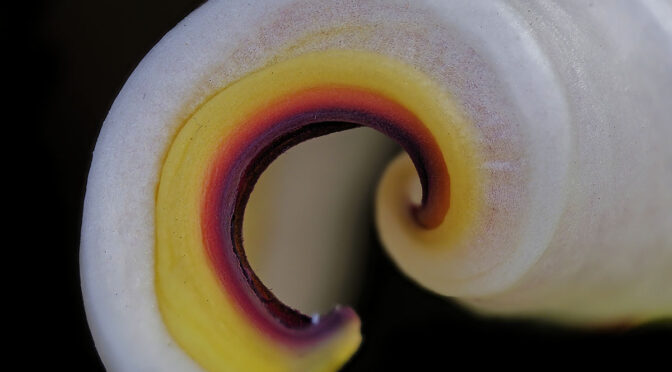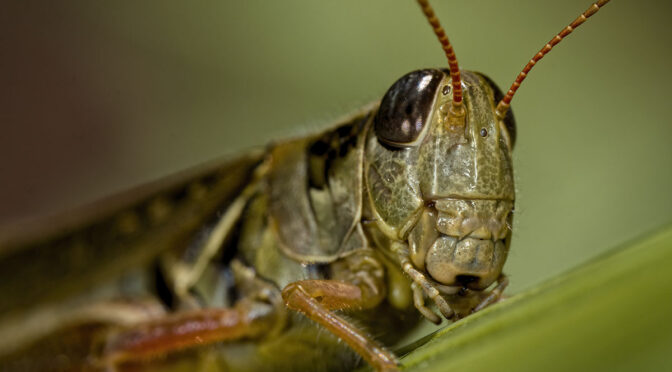This article shares a selection of forest HHFS macro images captured during a recent visit to the Niagara Glen Nature Centre. Over the past number of years I have come to more fully appreciate the photographic potential of using in-camera handheld focus stacking (HHFS) for my macro photography.
Category Archives: Macro
Handheld Focus Stacked Macro
This article shares a selection of handheld focus stacked macro images captured during a recent visit to the Royal Botanical Gardens (RBG) in Burlington Ontario. I didn’t spend very much time capturing images for my personal use as my main goal was to identify macro opportunities for my RBG guest.
Grasshopper Macro Images
This article features a selection of handheld grasshopper macro images captured with the M.Zuiko 90 mm macro IS PRO lens. I used the M.Zuiko MC-20 teleconverter for all of the photographs in this article. Most of the images were captured using handheld in-camera focus stacking technology. A few photographs at the end of the article were captured using the M.Zuiko STF-8 Twin Macro Flash.
Macro with 2X Teleconverter
As a handheld photographer, shooting macro with a 2X teleconverter was something that I had never attempted, or even considered, in the past. That all changed when we purchased the M.Zuiko 90 mm f/3.5 PRO IS macro lens.
Macro Treasures
Often we can find macro treasures to photograph while exploring the flower beds in the yards around our own homes. This article features a selection of images captured using handheld in-camera focus stacking in combination with the M.Zuiko 90 mm f/3.5 PRO IS Macro lens and M.Zuiko MC-14 teleconverter.
Micro HHFS TG-5 images
This article features a selection of micro HHFS TG-5 images of plants, flowers and midges captured handheld in my yard. I had a lot of fun pushing my Olympus TG-5 Tough with these handheld in-camera focus stacked (HHFS) micro photographs.
This was one of the few times that I can remember trying the in-camera focus stacking option when shooting in Microscope mode. All images featured in this article are displayed without any cropping at all.
HHFS Macro Flower Images
This article shares some recent handheld focus stacked HHFS macro flower images that were captured at the Royal Botanical Gardens. I’ve been experimenting with the in-camera handheld focus stacking technology resident in my E-M1X for a number of years.
HHFS Butterfly Images
In preparation for the upcoming spring/summer outdoor macro photography season, I recently got in some practice with HHFS (handheld focus stacked) butterfly images at the Niagara Butterfly Conservatory.
Looking Back at 2024
Reviewing past years, like looking back at 2024, is one of the most common things that many of us do at year end or at the start of a new year.
Personal Experimentation
The opportunity for ongoing personal experimentation is one of the things that I’ve come to love about digital photography. I did a quick scan through some YouTube video titles after doing a search for ‘photography techniques’. I was not surprised to find numerous videos trying to disseminate ‘must do’ advice.
When I dug a little deeper by searching ‘macro photography techniques’… the videos seemed to become even more dogmatic about following specific techniques at the exclusion of all others.










